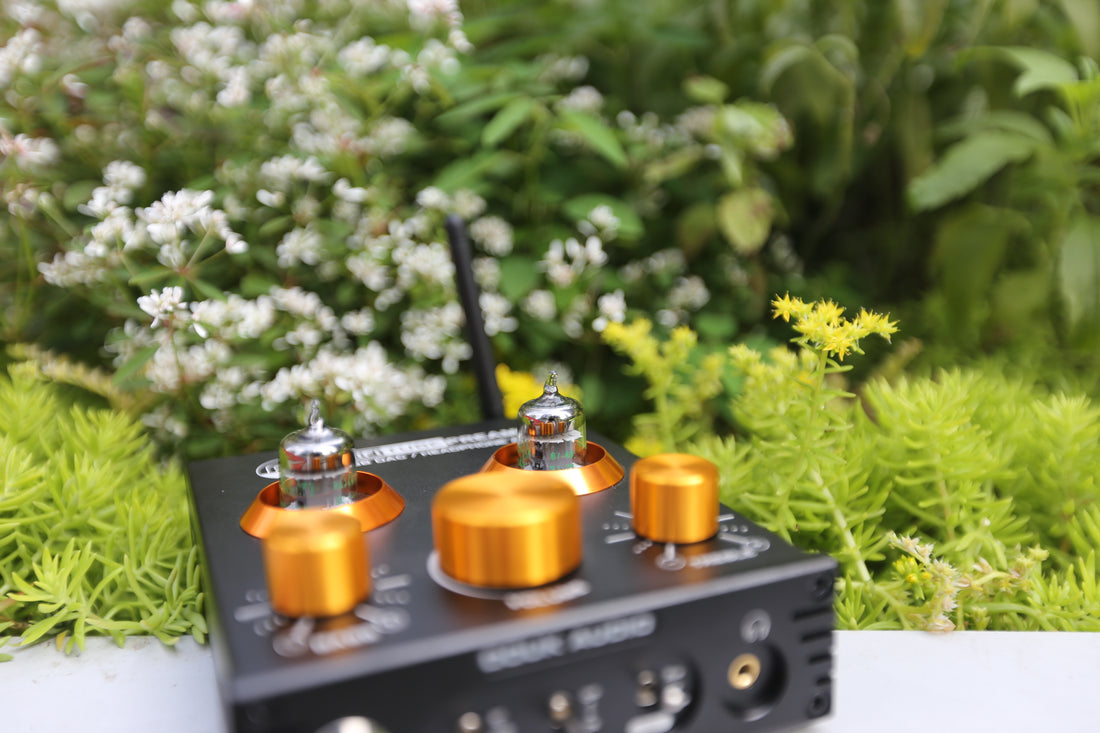
Tube vs solid stage preamps (what’s the difference?)
Share
TUBE VS SOLID STATE PREAMPS
A common debate you’ll no doubt have heard between audiophiles is tube vs solid state – which is better?
While we’re not going to get into ‘which is better’ in this piece (as it’s entirely subjective), we are going to take you through a guide on the difference between the two.
COVERING THE BASICS: PREAMPS
A preamp is a piece of equipment that brings the level of a microphone or instrument up to a point where it is recordable. They can be found in mixing consoles, outboard equipment racks, and even the interface you use at home.
THE PRODUCER HIVE PODCAST
Let it be known — no two preamps are the same.
This is why you’ll usually find a selection in any recording studio. A good studio engineer will know the intricacies of each at their disposal, each one will have a slightly different tone and add a different level of ‘coloration’ to the sound.
A BRIEF HISTORY
Nowadays we are used to using electrical items day in day out, most of which use transistors (i.e. solid state) and are small, compact and often portable.
However, prior to the invention of transistors tubes were used in items such as guitar amps and computers.
The earlier incarnation and uses of tubes are understandably more primitive than what we have today but the way they are used largely remains the same.
WHAT IS THERMIONIC EMISSION?
In a nutshell, this is the process whereby a heated piece of releases electrons. If a cathode (a device which current will flow out from) is heated it will give off electrons through thermionic emission. If an anode (a device that will receive current, sometimes called a plate) has a positive voltage applied it will attract these electrons.
By placing these inside a vacuum tube the electrons can flow freely as there is no air resistance.
HOW THIS APPLIES TO PREAMPS
Up until the 1940’s, most amplifiers used tubes in this way. Around this time however transistors were invented which became much more affordable, and were much less fragile than tubes.
The idea of a transistor is arguably more complex than that of a tube, but in very brief terms a transistor works by taking a small current at one end (the input) and producing a much larger current (the output).
The transistor works as a current booster, hence the term ‘amplifier’. One of the great things about transistors is they require much less power because of this than a tube.
Transistors themselves are much smaller and less fragile than a tube, so it is easy to see why they are now more common in electrical items than tubes. Can you imagine having to run your computer at home with a set of tubes?!
We know, in music, that even subtle differences can cause big changes whether that be the angle of a microphone’s placement through to the type of wood a guitar is made from. So naturally, a tube preamp will have different qualities to a solid-state amp with transistors.
A tube preamp tends to have warmth and smoothness that a solid-state often lacks.
Because of the way they work, driving the tubes creates a subtle but smooth distortion adding a pleasing character to the tone. This doesn’t necessarily constitute distortion in the sense of ‘overdrive’ but rather more color or character.
In fact, there is a more scientific explanation as to why a driven tube preamp is more pleasing than the sound of solid state transistors.
Now if we’re talking about mic pre-amps, it can often be the case that the difference is subtle but nonetheless will add character to the recording that when placed with other instruments causes it to sound better and balanced with other instruments.
The downside of this however is that tube amps don’t respond or perform as well at lower volumes, meaning for the bedroom guitarist they may not be the most suitable option if you’re looking for tonal quality.
The characteristics of tubes will also change depending on their temperature, with tube pre-amps generally sounding a little better when they have been left on to warm up.
In contradiction, a solid-state pre-amp tends to create odd harmonics, which in themselves can create a sense of dissonance which are less pleasing to the ear.
So, what does this all mean? Well, a solid state preamp could be a great choice if you want to capture the natural sound of your source.
TUBE VS SOLID STATE: PROS AND CONS
As with most musical equipment, there is no right or wrong. Both tube and solid state offer different characteristics. If you’re thinking about investing in a good quality pre-amp, weigh up the pros and cons first:
TUBE
PROS
- Warm tonal quality
- Creates a lush distorted sound that adds character
- Emphasizes even harmonics which are pleasing to the ear
CONS
- Tubes require more maintenance and will eventually need replacing
- Tubes may not be as suitable as a solid state pre-amp for instruments such as drums that have powerful transients and quick attack
- Tube tone changes over time and use
SOLID STATE
PROS
- Clean sounding with very little distortion
- Ability to handle higher gain signals
- More suited to instruments such as drums and often acoustic guitar
- Tend to be cheaper than tube pre-amps
CONS
- Can produce odd harmonics which aren’t as pleasing as tubes to the ear
- Can sound harsh on certain instruments
- Cheaper pre-amps often don’t sound great, you may need to invest to get a quality sound

